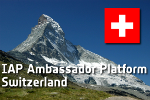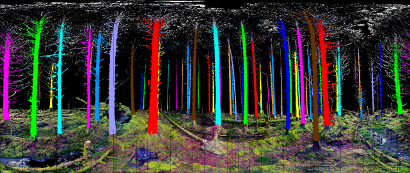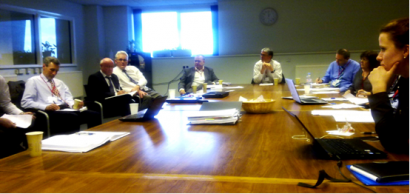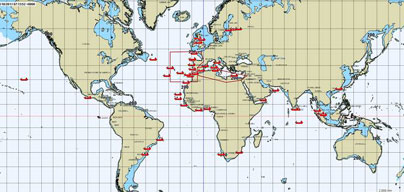Swiss IAP Ambassador Platform Vacancy Announcement
 Together with the Swiss Space Office, the European Space Agencyâs Integrated Applications Promotion (IAP) programme wishes to announce a vacancy for a Swiss ESA IAP Ambassador Platform manager. This manager will be responsible for the Swiss IAP Ambassador Platform (AP), and will start their duties on 1st October 2012.
Together with the Swiss Space Office, the European Space Agencyâs Integrated Applications Promotion (IAP) programme wishes to announce a vacancy for a Swiss ESA IAP Ambassador Platform manager. This manager will be responsible for the Swiss IAP Ambassador Platform (AP), and will start their duties on 1st October 2012.
Integrated Applications Promotion
The European Space Agency (ESA) is Europeâs gateway to space. Its mission is to shape the development of Europeâs space capability and ensure that investment in space continues to deliver ever more benefits to all the citizens of Europe.
An element of ARTES Applications, the objective of ESAâs Integrated Applications Promotion (IAP) programme is the development of operational services for a wide range of users through the combination of different systems. By using and integrating different space assets (Satellite Communication, Satellite Navigation, Earth Observation, Manned Space Technologies), improved or new services on a regional, national or European scale can be created. Intrinsic to these new applications is the added value of space and the long-term sustainability of the resulting services. The programme thereby responds to user needs in areas such as health, safety, energy, transport and development.
Role & Objectives of the Swiss IAP Ambassador Platform
The main roles and objectives of an Ambassador Platform (AP) within its sector or region of responsibility are to:
-
Spread and increase awareness of IAP amongst communities not normally familiar with ESAâs space programmes, to inform potential stakeholders, and to galvanize their interest in these programmes;
-
Federate the demand so as to obtain the critical mass capable to justify the satellite applications and result in sustainable services;
-
Motivate/stimulate the relevant stakeholders to submit viable proposals, and/or to propose partnerships with ESA, where IAP might be instrumental in filling their operational gaps;
-
Be an âhonest brokerâ between ESAâs relevant opportunities on the one hand, and the stakeholders (e.g. solution/service providers, user communities, potential partners) interested in participating and/or partnering in these programmes on the other hand.
Main tasks of the Ambassador Platform
-
Set up relations with users/stakeholders (institutions, decision makers, co-financers, service providers, solution providers, etc.).
-
Organise workshops and awareness events to serve the relevant users/stakeholders.
-
Co-administer an IAP community portal representing the activities of the Ambassador Platform.
Who should apply?
Candidates should have a good understanding across the broad range of space applications relevant to IAP. They should have experience and a strong capability in partnership building, organising workshops and stimulating proposals for the IAP programme from Swiss industry and the user community. Particularly important is the role of identifying new users, understanding their needs and translating those needs into partnerships with industry as well as proposals for new activities.
Candidates should also possess good communication skills, be able to manage relationships, work in a team and be self-motivated and disciplined.
The AP is expected to play a âneutralâ role in the IAP programme, acting as a hub between ESA, industry and the user community. The Swiss AP might be hosted by any relevant entity compatible with the IAP programme goal and mandate. The AP manager functionality will be ensured possibly via a full time mandate. Alternatively, ad hoc arrangements may be envisaged according to the identified candidate.
How to apply?
If you or your institution is interested in responding to the Swiss Ambassador Platform vacancy, please send your CV with a covering letter, description of any specific thematic areas of interest for the AP role, and a list of publications to iap@esa.int before 30th July 2012. The duration for the role of AP is foreseen to be one year at first with the potential for a one year extension (1+1). ESA, the Swiss Space Office and the AP will mutually decide on the option for renewal before the end of this period.
More information on Ambassador Platforms is also available by downloading the Official Information Flyer.









 The control and surveillance of borders is an essential function of any state which if done efficiently, can lead to a reduction in cross-border crime and illegal migration.
The control and surveillance of borders is an essential function of any state which if done efficiently, can lead to a reduction in cross-border crime and illegal migration. During this proof of concept demonstration techniques for tracking patrols and distributing the information to commanders, the use of satellite communications, and Earth observation techniques were demonstrated. The Earth observation products included reference mapping, hot spot monitoring, and techniques to develop permeability mapping for the border area. These products were distributed to the field locations over satellite communications links.
During this proof of concept demonstration techniques for tracking patrols and distributing the information to commanders, the use of satellite communications, and Earth observation techniques were demonstrated. The Earth observation products included reference mapping, hot spot monitoring, and techniques to develop permeability mapping for the border area. These products were distributed to the field locations over satellite communications links.

 Selected offshore vessels within EU waters and beyond are now in sight of EU customs officials as an ESA demonstration project, in support to the European Maritime Safety Agencyâs Blue Belt pilot project, gets fully underway.
Selected offshore vessels within EU waters and beyond are now in sight of EU customs officials as an ESA demonstration project, in support to the European Maritime Safety Agencyâs Blue Belt pilot project, gets fully underway.